#set in the 1990s thailand
Text

Shameless flattery.
#anime & manga#GIFs#Black Lagoon#Rebecca Lee#Revy#Two-hands#Gun wielders#modified beretta 92fs .9mm inox#Season 1#Action#Seinen#set in the 1990s#Thailand#One of the 3 most deadliest women of all Roanapur#mentally unstable#Grew up in Poverty#had a shitty and traumatic childhood#25 to 26 years old#Asian-American#Chinese-American#Large tribal tattoo
103 notes
·
View notes
Text

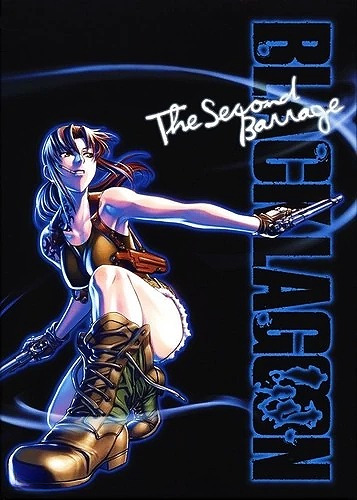
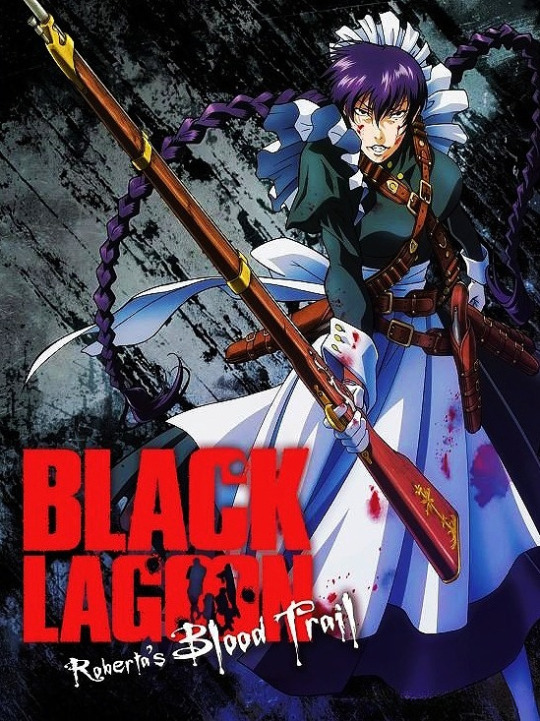
Black Lagoon [2006 - 2011]
Action ; 2 Seasons: 24 Episodes + 1 OVA: 5 Episodes
Seinen
Set during the mid-1990s, Rokuro "Rock" Okajima is a 25-year-old Japanese salaryman working for Asahi Industries in Tokyo. One day, he is taken hostage by the crew of the Elco-type PT boat Black Lagoon. The Lagoon Company, a group of pirate mercenaries dedicated to smuggling goods in and around the seas of Southeast Asia is composed of Dutch, the African-American leader and a former U.S. Navypatrol boat crewman; Revy, the Chinese-American main gunfighter of the team; and Benny, a Jewish-American college dropout, who serves as the mechanic, computer specialist, and researcher.
After Asahi Industries' department chief abandons Rock, declaring him dead, he decides to join the crew. Despite living now as a pirate, Rock retains his skills and good-natured attitude, serving the team as their negotiator and "professional" face of the group. The crew's base of operations is located in the fictional town of Roanapur, Thailand, which is home to pirates, thieves and various criminal organizations including the Japanese yakuza, the Chinese triad, the Russian and Italian mafias and the Colombian cartel. The Lagoon Company takes on a variety of missions, which generally involve violent gunfights and wars with all kind of criminals.
youtube
8 notes
·
View notes
Text
Lucid MV discussion
So...1-spoilers (duh). You can watch the Lucid MV here, and I 10,000% recommend you do before reading the rest of this...and these are just ramblings about the theme and ideas that I feel about the MV. I haven't searched out any interviews or anything about the ideas behind it...I'm just going off what I see.
The vibe I got, and one that was echoed by others in a Discord... very much Peter Pan vibes. It's what I thought of right away. The overall story of the video, the visuals, it's all very much classical Peter Pan, with a bit of Faerie prince.
I guess we're going chronologically, because that's what makes sense to me, we start with wide shot of the room where Pornappan is sleeping (that is the actress's name, and it seems weird to just refer to her with no name at all, so we're going with real name, and I'll also just be calling Jeff Jeff).

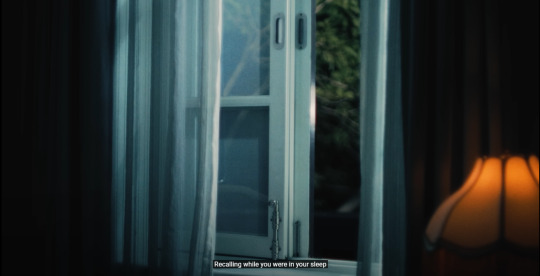
And we see the open window, with curtains fluttering, which is a visual you will see in many retellings of the Peter Pan story. (This is not, as far as I can tell from a Peter Pan retelling, but it had the vibe, and this post is already gonna take me an hour +.)

The setting itself is also very western fairytale inspired, from the location and decor of the room, to the costumes. All of it has a traditional English countryside manner type of feel, and I do genuinely wonder when and where it was filmed, as it doesn't necessarily look like my own preconceived notions of Thailand visually.
The initial seeing of Jeff asleep on the floor, reminded me so much of the scene in Hook where Peter remembers seeing Moira for the first time that I had to rewatch it because I thought I might be misremembering.
I wasn't. It's not an exact match by any means, but it very much has the same emotional feeling I think.


Just the general awe of seeing a person so beautiful...which like...yeah.


As Jeff starts returning to visit Pornappan, the Peter Pan vibe really solidifies for me, he brings her the fruit and the flower and it's all very innocent and sweet, very reminiscent of the thimble-kiss.



She sort of patches up his injuries, which made me think of Wendy sewing Peter's shadow back on.

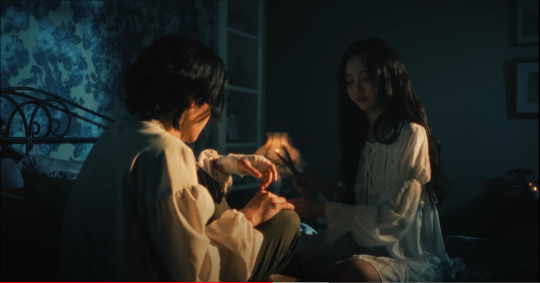
And as we go on we see that he stops coming, but we don't know why. In the sort of 'standard' story of Peter Pan, he does return year after year, but eventually Wendy grows up, and she can no longer go with him. What's a very lovely piece of storytelling is how the song's lyrics touch on replaying of memory, and we see that towards the end, Pornappan is remembering their times together as she worries why Jeff hasn't returned.

Then, it was is a bit of a twist, both on the lyrical content of the song, but also on the 'fairy-tale standard' Pornappan goes to look for him, venturing out and finding Jeff asleep amongst flowers and vines.

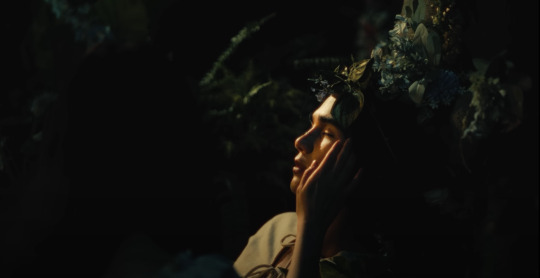
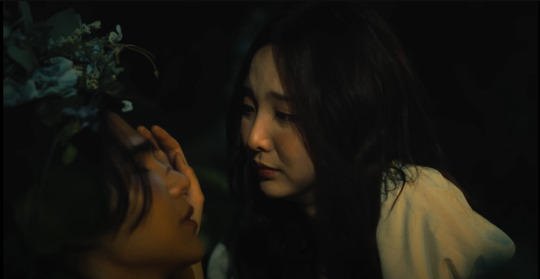
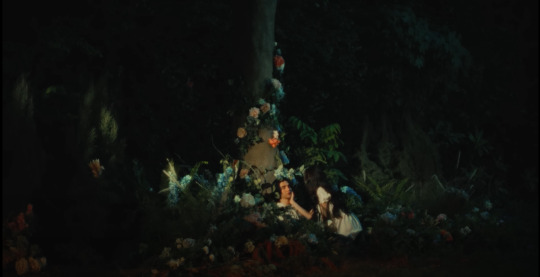
The final scene, or piece is Jeff beginning to open his eyes, and Pornappan opening her own, showing that it was all a dream, or at least that last bit was, which is just so bittersweet.


But what ended up being so interesting is that because I thought I remembered the similar scene in Hook with Peter and Moira, I rewatched the whole movie (it's available on Netflix, in the US at least) and our final scene with Tinkerbell when Peter returns from Never Land is this:
Which is very much the emotion and feeling being portrayed by both the song and the video. Now, I wouldn't put it past Jeff to have seen Hook, though it came out a few years before he was born. It is considered a classic for many reasons, and generally in the 1990's western media would take a couple of years to find it's way to the rest of the world, barring outrageously groundbreaking movies, which Hook is not. And since Jeff is bilingual, the chances of him encounter a foreign film like Hook are of course far more likely. So, I find the ideas presented in the MV, and they way they so closely mirror many of the moments of Hook specifically fascinating.
Switching gears for just a moment, I already analyzed the English lyrics of the song, as in the lyrics of the English version (you can read that and an analysis of all his English songs here), but as I was writing this and rewatching the video I notices that the translated lyrics are VERY different. Not so much in content, but more in perspective. Jeff is the speaker in both cases, but in the English lyrics he has been left behind, while in the translated lyrics he is the one who left. This matches up with the MV, where Jeff is a Peter Pan/Fae Prince who has been coming to visit Pornappan, but eventually leaves and doesn't return.
This is a screenshot of both sets of lyrics side by side:

In the translated lyrics Jeff is talking about knowing their time is brief, it only exists in the moonlight, and he states being afraid that she will forget him in time, that his memory will fade. And he's begging her to keep those dreams close to her heart, so that they won't fade.
But looking at both sets of lyrics it could almost be two sides of the same story. The English lyrics could almost be Pornappan's perspective of what is happening throughout the story of the MV.
Now there's a multitude of reason for the changes between each set of lyrics, the obvious one being that the pretty vast differences between Thai and English necessitate some pretty drastic changes to allow the lyrics to keep with the melody of the song. Totally makes sense. I would very much have to take a look at the difference in his other songs to see what those might reveal, and I honestly might, just because the very concept of bilingual songwriting is fascinating.
But I hope you enjoyed this little deep dive, it got far deeper than I anticipated. About 1100 words...that's 2.5k words on Jeffrey just today. I hope you enjoyed and you may enjoy this gif of some Jeffrey cake. (We don't get a lot of it, he honestly struggle a bit in the cake dept., but we adore him anyway.)

#jeff satur#Jeff Satur Lucid#Lucid MV#Pornappan Pornpenpipat#Music video analysis#Peter Pan#Wow#this was fascinating
14 notes
·
View notes
Photo

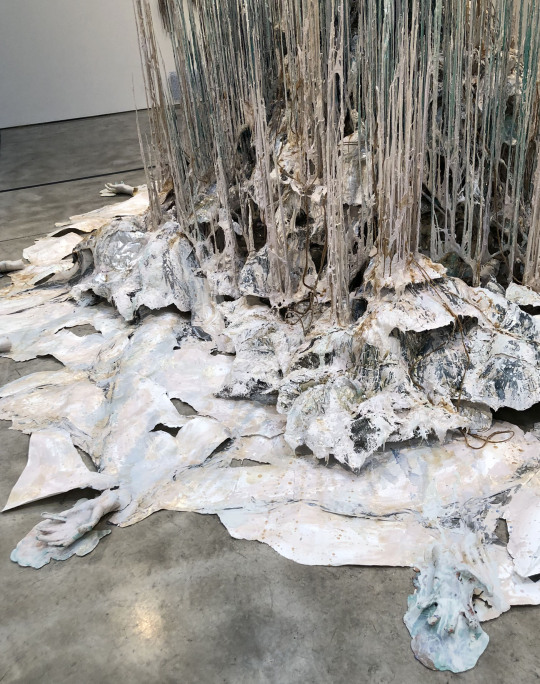




Closing today at Kasmin in NYC, is Shades of Daphne, curated by Stephanie Cristello. It is a “timely survey of painting, sculpture, installation, and film by a group of 11 international and intergenerational contemporary artists, many of whom have not previously exhibited in the United States.”
From the Kasmin gallery website-
Bringing together recent and historical works spanning over three decades from the 1990s to the present, the exhibition includes new commissions, site-specific performances and installations that respond to the architecture of the gallery space.
Celebrating the spirit of resistance and revolt, the exhibition takes the figure of Daphne—the Ancient Greek nymph who turned herself into a laurel tree to escape Apollo’s pursuit—as metaphor to explore work that engages with hybrid figures, metamorphoses, and suspended states of becoming. Highlighting deconstructed impressions of the body in relation to mythologies of transformation, the exhibition focuses on work that features remnants of presence even when the figure is absent—objects that hold the memories of living things. Acting as portals, thresholds, and containers of shifting states, each work also engages with architecture as a framework, both in reference to the body and to spaces constructed for both personal and collective ritual.
Information on Diana Al-Hadid’s sculpture, The Long Defeat, 2017-2023–
Diana Al-Hadid’s (b. 1981 Aleppo, Syria) sculpture takes the Flemish primitive painter Hans Memling’s Allegory of Chastity (c. 1475) as a starting point. The work pictures the bodice of a female figure, her head bowed, hands interlaced at the waist, surrounded by the mouth of a volcanic mountain. Al-Hadid’s first interpretation of the painting culminated in the monumental sculpture Citadel (2017–18), a hollowed silhouette of a woman framed by the base of an embankment whose porous mass extends like a root system toward the ground. Her face is vacant of features, delineated instead by two severe lines like one would find in the initial sketch of a portrait artist, that indicate her gaze remains lowered. Yet in contrast to the demure painting, the massive scale of the work allows for her downcast eyes to stare straight into those of the viewer below.
Information on Bianca Bondi’s installation, The Antechamber (Myths of descent and return), 2023-
An iteration of Bianca Bondi’s (b. 1986, South Africa) installation for Busan Biennale 2020, The Antechamber (Myths of descent and return), grew from a translation of Kim Hyesoon’s poem, “Tundra Swan.” As Bondi states: “salt is essential for life but too much brings death.” Taking inspiration from paintings such as Henri Gervex’s Rolla (1878) or John Everett Millais’s Ophelia (1851–52), we observe a clinical but feminine bedroom setting composed of a bed with a pond at its center, echoing a circular mirror above a dresser at the end of a pathway through the tundra. Salt surrounds the installation, representing both preservation and resurrection. A swan stands alone, symbolizing the force of art and poetry. This is the third chapter of the installation, following the Thailand Biennial in 2021.
#kasmin gallery#diana al-hadid#bianca bondi#nyc art shows#sculpture#art installation#nyc art gallery#chelsea nyc art gallery#art shows#art#kim hyesoon#henri gervex#john everett millais#hans memling
14 notes
·
View notes
Link
Check out this listing I just added to my Poshmark closet: dining table set of 4 Mikasa Spring Legacy Y4003 soup bowls..
0 notes
Text
Unlocking the Enigma: A Vet's In-Depth Manual on the Exquisite Thai Lilac Cat Breed
Introduction: The Enchanting Thai Lilac Cat Breed
The Thai Lilac, an extraordinary feline adorned with a lavender-gray coat and captivating blue eyes, hails from the mystic lands of Thailand. Join us on a journey to unravel the mysteries surrounding these elegant creatures.

Origins of the Thai Lilac Cat Breed
Originating in Thailand, the Thai Lilac breed emerged in the 1990s due to a unique genetic mutation, resulting in their distinctive coat and eye color. Their semi-long, velvety fur boasts various shades of light gray with subtle pink undertones, commonly referred to as lilac coloring. Complementing this cool fur are their bright blue eyes, creating a mesmerizing contrast. Adult Thai Lilac cats typically weigh between 6 to 10 pounds.
Care Guidelines for the Thai Lilac Cat Breed
Nutrition:
Opt for hairball control formula dry food to prevent common issues in long-haired cats.
Include wet food for added hydration, promoting skin and coat health.
Treats can be used for positive reinforcement during training.
Environment:
Provide soft, elevated beds for a secure vantage point of their surroundings.
Scratching posts, ideally made of sisal material, assist in claw maintenance and stretching.
Toys:
A variety of toys keep their sharp minds engaged.
Grooming:
Weekly brushing reduces shedding and maintains a lustrous coat.
Bathe when dirty to remove loose hair that self-grooming might miss.
Trim claws if scratching isn't sufficient to prevent overgrown nails.
Care Practices:
Daily interactive playtime offers both mental and physical enrichment.
Adopting or Purchasing a Thai Lilac Cat
Locations: Most prevalent in Thailand, as well as parts of Europe and North America.
Cost: Average prices range from $800 to $2000+ USD.
Rescue Groups: Consider Lilac Point Siamese Rescue Society and Seattle Purebred Cat Rescue.
Pre-Adoption/Purchase Checklist
Health Check: Confirm the cat's exam history to catch potential issues early.
Vaccinations: Kittens require three vaccine sets, followed by annual boosters.
Medical History: Investigate potential hereditary health conditions.
Preparing for a Thai Lilac Cat
Cat-proof your home by securing cords and removing small spaces where kittens could get stuck.
Stock up on interactive toys that match their intelligence.
Brush weekly and trim nails to stay on top of grooming needs.
Essential Equipment: Premium dry food, cat brush, nail clippers, a variety of wand/interactive toys, scratching posts, litter box, and comfortable beds/perches.
Common Health Concerns: Keep an eye out for heart disease, dental issues, and skin irritations.
Essential Vaccines: Rabies, panleukopenia virus, calcivirus, and herpesvirus.
Thai Lilac Cat Names
Choose regal names that suit these majestic cats, such as Princess, Duchess, Majesty, Empress, Jade, Sterling, Frost, and Crystal.
0 notes
Text
New Post has been published on Michel Tanguy
New Post has been published on http://micheltanguy.com/asianfeels-com-critiques-read-critiques-on-asianfeelscom-before-you-purchase-asianfeelscom/
Asianfeels Com Critiques Read Critiques On Asianfeelscom Before You Purchase Asianfeelscom
Content material
What To Search For When Selecting A Mailbox Order Star of the event Site?
What Percentage Of Mail-order Relationships End In Divorce?
Such as sending messages sending Interest, sending kiss, greeting Card, sticker chat etc. It is easy and fast, you don’t want to hyperlink multiple functions or multiple web site. You can also set up to obtain information by e-mail or facebook when thai girl interested you or text you. Unlike lots of our https://thaiwomen.org/ rival websites, Thaiflirting.com has the distinctive benefit of being based mostly in Thailand. This implies that we are here to supply one of the best relationship service for Thai singles, Thai relationship, Thai romance and even Thai marriage.
The last item you want is to end up relationship a lady who’s solely seeking monetary support for her family, and isn’t genuinely thinking about what you’re looking for.
Indicate your persona to draw stunning wives with similar traits.
Though it’s a paid characteristic, I enjoyed sending compliments—they don’t value a lot, and women love them.
There’s no query that meeting a mail bride and visiting a spot across the world is an incredible experience!
But what is it about these Thai brides that make them so sought after? Let’s explore some the purpose why Thai mail order brides are extremely popular nowadays. They are familiar with Western culture, but on the identical time protect plenty of local traditions and customs.
For the current time, I’m steadfast and open-minded, so this web site enables us to be the things I was and get connected to people who are intriguing for me personally. It has been your lover who acceptable us to see this evaluation. Initial, i simply waved him away as a end result of this concept doesn’t appear nice for me. Prices are not more than odd, many additional the same means with the identical efficiency value rather more.
In addition, you should know most websites have specific packages designed to boost your usability on the site. An instance is CuteAsianWoman, which gives you a trial period before you can buy credit for as low as $2.ninety nine for 20 credits. Besides, they are charming, loyal, faithful, and good in mattress. So if you are on the lookout for romantic companions who don’t thoughts sticking with you all through, find a Ukrainian girlfriend and marry her.
What To Search For When Choosing A -mail Order Star of the event Site?
In the US, it costs around $120 and about $15 to get passport photographs. Most of the work can be done online by way of the United States State Department’s Passport Office. But you will usually should take care of the visa for your self. Some businesses offer to do it for you and even provide a translator for an additional fee on prime of it all.
What Share Of Mail-order Marriages Finish In Divorce?
They additionally come from many alternative backgrounds and countries. Mail order bride marriages within the United States every year and only about 20% end in divorce. You can talk with the ladies on this site by way of several forms of contact, including chat, mail, telephone calls, video, and by sending virtual presents. This dating service makes it simpler for customers to seek for dates than most different websites.
While Diddy and Chapman, who’s a businesswoman, by no means dated, they were pals for years and welcomed a toddler, Chance, together whereas Diddy was nonetheless in a relationship with Porter. The “I’ll Be Missing You” rapper has been linked to well-known stars from Jennifer Lopez to Cassie all through his profession. His longest relationship was with Kim Porter, whom he started relationship in the 1990s earlier than their final break up in 2007. They don’t have the same personalities, yet they nearly have the identical physical appearance. But once you meet either of them, you’ll certainly have a memorable relationship.
There are additionally dating sites that are extra in style as a end result of they get the job done higher than most. They have plenty of members, features and caring support service. The faux profiles seem to be managed by fake chat operators. We should point out that we didn’t read about fictional profiles or fake chat operators within the terms and circumstances. But we found another notice which could stand for that.
0 notes
Text
Unveiling the Astonishing and Thrilling World of Asian Games with Kurash, Bang, Wallop and More
The Asian Games, set to begin in Hangzhou on Saturday, showcases a variety of sports that go beyond the traditional Olympic events. AFP Sports presents five unique sports that will be contested:
1. Sepak Takraw:
Originating in Southeast Asia, this gravity-defying sport, also known as “foot volleyball,” has gained immense popularity at the Asian Games since its introduction in 1990. Thailand has…

View On WordPress
0 notes
Text
Unveiling the Astonishing and Thrilling World of Asian Games with Kurash, Bang, Wallop and More
The Asian Games, set to begin in Hangzhou on Saturday, showcases a variety of sports that go beyond the traditional Olympic events. AFP Sports presents five unique sports that will be contested:
1. Sepak Takraw:
Originating in Southeast Asia, this gravity-defying sport, also known as “foot volleyball,” has gained immense popularity at the Asian Games since its introduction in 1990. Thailand has…

View On WordPress
0 notes
Text
Unveiling the Astonishing and Thrilling World of Asian Games with Kurash, Bang, Wallop and More
The Asian Games, set to begin in Hangzhou on Saturday, showcases a variety of sports that go beyond the traditional Olympic events. AFP Sports presents five unique sports that will be contested:
1. Sepak Takraw:
Originating in Southeast Asia, this gravity-defying sport, also known as “foot volleyball,” has gained immense popularity at the Asian Games since its introduction in 1990. Thailand has…

View On WordPress
0 notes
Text
Migrant spouses find acceptance hard to come by in South Korea
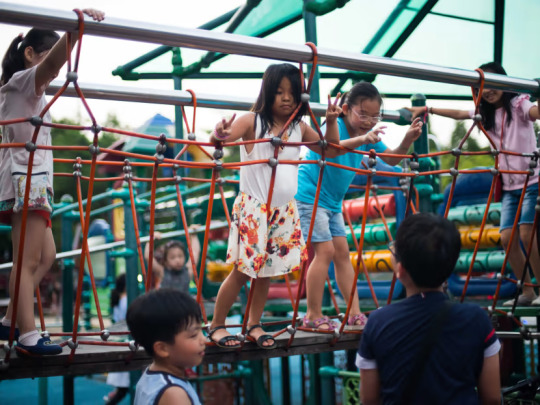
▲ Pictured: Lim Pyo Ra (centre) is popular among her Korean friends from elementary school but sometimes gets teased because she is of mixed race. Her Filipino mother married her father one day after they met. Photo: Claudia Chong
SEOUL — Ms Cecilia Flores works as a barista in a cafe in Mapo district, where she talks to her customers in fluent Korean. She can cook Korean food and is well-versed in Korean customs.
But her son was only six years old when he asked his mother: “Why are you Filipino? Why can’t you be Korean?”
Ms Flores, 30, moved to Seoul in 2008 after marrying a Korean introduced to her by her cousin, who also married a Korean.
Said Ms Flores of her son: “We would be happily holding hands on the street, but the moment we bumped into his friends, he would snatch his hand away and put some distance between us.”
At home, Ms Flores relishes the moments when her son lets her lay her head on his lap, or comes running with a glass of water and pillow when she is tired.
“But outside, he sometimes treats me like a stranger because his friends tease him for having a foreigner as a mother,” she said.
Her nine-year-old son is not the only one who makes her feel like an outsider.
When she first attended a parent-teacher meeting at her son’s school, she noticed how the teachers greeted every parent but her.
The Korean mothers too avoided her.
“It hurts. But I am Filipino and you can’t change that,” said Ms Flores, who also has a five-year-old daughter.
She is one of 273,198 foreign-born spouses, including naturalised ones, living in South Korea as of August 30 this year.
The figure has more than doubled from 124,971 a decade ago.
A majority of the 154,267 spouses who have yet to attain citizenship hail from China (37.2 per cent), followed by Vietnam (27.2 per cent), Japan (8.6 per cent), the Philippines (7.6 per cent), Cambodia (2.9 per cent), Thailand (2.3 per cent), Mongolia (1.5 per cent) and other countries (12.7 per cent).
About a third of those who come from China are ethnic Koreans who had migrated to northern China, close to the North Korean border, during World War II.
International marriages surged in the 1990s, when the migration of ethnic Korean women from rural to urban areas forced men in the countryside to take foreign brides.
Once a countryside phenomenon, the practice has shifted to cities as well, due to the societal pressure on Korean men to get married.
Seoul has the second highest number of migrant wives by province, beaten only by Gyeonggi, the most populous province.
In 2006, following the annual increase in the number of migrant wives, the government coined the term ‘multicultural family’ to describe the families that result from international marriages. It then introduced a slew of initiatives to help integrate foreign women into society, recognising their potential to boost the country’s ailing birth rate.
Multicultural family support centres were set up in major districts, offering Korean language classes, employment support and even activities like how to don a hanbok — the Korean traditional costume.
There are now over 200 such centres across South Korea.
Such policies have been effective in helping migrant wives have an easier life, said Mrs Nguy Thi Thuy Huong, vice-chairwoman of the Association of Vietnamese Women in Korea.
“Financial support is provided by the government for struggling families. Korean language centres help migrant wives overcome their language barrier — one of the major difficulties women from different countries face after coming to Korea,” she said.
SETTLED BUT NOT FULLY ACCEPTED
But some experts say that the government’s approach has been fixated on helping migrant wives, with less focus on getting Koreans to accept them.
“Their efforts are focused on settlement assistance for new members,” said Professor Park Kyung Tae of Sungkonghoe University, adding that these efforts are aimed more at helping the newly arrived brides adapt to Korea rather than to help Koreans understand people of other cultures and how to live with them.
Said housewife Lee Shim Bi, 37, a Filipina married to a Korean and a mother of one: “Although Koreans are quite kind, some think that if you live here, you have to follow the rules here.”
Mrs Lee, who has lived in Korea for the past 18 years, added: “Yes, they support multiculturalism by teaching us how to fit in. But we only accept; we never share.”
Despite a 2015 study estimating that immigrants would make up 10 per cent of Korea’s population by 2030, multiculturalism remains a new concept to many South Koreans, who grew up proud of their society’s ethnic homogeneity.
For private school teacher Choi Il Ok, 59, finding out she had to teach some mixed race elementary school children at a family support centre gave her the jitters.
“I was afraid because I had never met multicultural children. I didn’t know what to expect and I thought they would be difficult to manage,” said Mrs Choi.
“But I eventually learnt that they are not so different from ordinary Korean children. I’m proud to be able to teach them now.”
Ever since the government turned its attention to the families of migrant women, awareness of multiculturalism has grown.
A 2013 survey conducted by the Asan Institute for Policy Studies showed 67.5 per cent of respondents have a positive attitude towards multicultural families.
FROM WORKPLACE TO HOME
But not all Koreans are as positive as Mrs Choi though.
Vietnamese Tran Thi Hong Nga, 27, is indignant at the way Korean women at her previous company treated her and the other foreign wives working there.
Her ex-colleagues would shout at her and exclude her from conversations during group lunches, she said.
“They wouldn’t treat another Korean the same way. We decided we would just pack food from home and eat in the office, because we didn’t want to go out with them,” added Ms Tran, who worked as an office administrative assistant.
She eventually left her job because it got too tiring to take care of her daughter while working.
Such workplace discrimination is not uncommon.
Ms Zarifa Hagitova from Uzbekistan snapped when her ex-employer failed to pay her salary for the second month running, simply because she was a foreigner, she claimed.
The 27-year-old filed a complaint with the Ministry of Employment and Labour, threw all her efforts into learning Korean at a multicultural centre, and now works at the government-run Danuri Helpline call centre where she counsels marriage migrants who face problems at home.
Ms Hagitova also had to put up with some tension with her in-laws. They forbade her from inviting friends home, “because they are foreigners, and will steal from our house”.
Dr Cho Young Hee of the International Organization of Migration – Migration Research and Training Centre said the surge in the number of multicultural support programmes has led some to accuse the government of providing more for foreigners than its own people.
For instance, 86.4 billion won (S$103.4 million) was set aside in this year’s national budget plan to fund multicultural family support such as language classes, job and entrepreneurship training and community meetings.
Domestic disagreements often stem from not understanding foreign cultures, said Mrs Cecil Park, 47, a counsellor at the Seoul Counseling Center for Migrant Women.
“The family cannot admit that (the wife) has her own culture and upbringing, and that it cannot change in one day or one month,” said Mrs Park. “She has to adapt to the way of living here, but the family of her husband can’t wait. And so the fight begins. They don’t understand that they need to adapt too.”
The counselling centre mostly handles cases of domestic violence against migrant wives.
According to Mrs Park, it receives one to three new cases every day — from minor issues such as domestic arguments, to major issues such as a wife who ran away to a shelter to escape physical abuse.
From 2006 to 2013, the number of divorces between Korean men and foreign wives rose from 3,900 to 7,600.
The number of broken marriages and cases of abuse resulting in the deaths of migrant wives prompted the Ministry of Justice to introduce stricter requirements for a marriage visa.
Since 2014, Korean spouses need to earn at least 14.8 million won a year. Marriage migrants have to prove a level of proficiency in Korean as well.
Divorce rates have fallen since then, but cases of discrimination continue to worry Mrs Park, who has worked at the counselling centre for 14 years.
She reckons that for every 10 marriage migrants, seven face prejudice in their new families.
The situation is compounded by the fact that South Korea has yet to introduce legislation regarding discrimination on the grounds of race, ethnicity and country of origin.
And it appears that children from multicultural families are not spared the intolerance, either.
In the neighbourhood of Daerim, eight-year-old Lim Pyo Ra began noticing a few years ago that the laughter at the playground would always be directed towards her the moment she spoke to her mother in English.
Her mother, Ms Glaiza Valdez, 32, said it has been a year since Pyo Ra started refusing to reply to her in anything but Korean — even if Ms Valdez insists on speaking to her in English or Tagalog.
The number of multicultural students in South Korea more than tripled to 99,186 in 2016, from 31,788 in 2010, prompting the government to open schools specially for them.
Multicultural family support centres also offer programmes to support the children’s language development, supervise their homework and encourage them to share their culture with neighbours.
AN UNCERTAIN FUTURE?
But observers say that more can be done to urge ethnic Koreans to be accepting of other cultures.
Last June, a government official revealed that the Korean army is expected to become multiracial by 2025.
The Defence Ministry has forecast that the annual number of male enlistees from multicultural families will reach an average of 8,518 between 2015 and 2031.
Up until 2012, men of mixed races were barred from serving in the military. The ministry has said that it plans to study soldiers’ perception of multiculturalism and develop ways to keep discrimination at bay.
Professor Park of Sungkonghoe University said for a nation so new to multiculturalism, South Korea is “not bad”.
“For instance, we don’t get a lot of cases of hate crime,” he said.
Social initiatives such as Cafe O Asia, which employs migrant wives across its 15 cafes in Seoul, have also sprung up in recent years.
It remains to be seen, however, which direction the government will take with its multicultural policies when it unveils the five-year plan for migrants in December this year.
Said Mrs Lee from the Philippines: “I think Koreans like learning, but some of our cultures are not properly introduced to them. Somebody must do more to support that. They must know what our culture is, and our beliefs.”
Claudia Chong, a final-year journalism student at Nanyang Technological University’s Wee Kim Wee School of Communication and Information, did this report as part of the school’s Going Overseas For Advanced Reporting module. This is part of a series on South Korea that TODAY is running.
0 notes
Text
What is fishmeal dryer?

Fish meal is a high-protein feed that uses one or more kinds of fish or fish scraps (fish head, tail, fin, internal organs, etc.) At the beginning of the 21st century, the world's total output was about 7 million tons. The countries with the largest output were Chile, Peru, Japan, and the United States. At the same time, Norway, Denmark, South Africa, Iceland and Thailand were also major fishmeal producers. Among them, Chile and Peru have the highest output, with the highest annual output reaching more than 1.3 million tons (1989) and more than 1.2 million tons (1990) respectively, and their exports account for about 70% of the total trade volume. China's fishmeal industry started late, with an annual output of about 100,000 tons, and most of them are concentrated in coastal provinces such as Shandong, Zhejiang, Guangdong, and Fujian. China uses a relatively high amount of fishmeal, with an annual consumption of nearly 1 million tons, and an annual import of about 800,000 tons. Most of the imported fishmeal comes from Peru.
1.What is a fish meal dryer
In short, fishmeal dryer is a kind of equipment that obtains coarse fish meal by drying the solid after cooking in fish meal production through the heat source generally steam.
Fish meal dryers generally consist of a rotating main shaft and a stationary shell.
Dozens of heating discs are installed on the spindle rotating at the rated speed, and the discs are closely arranged, providing a huge heat exchange area for drying materials. Saturated steam (usually 6kg) enters from a section of the rotating shaft through the rotary joint, and then enters each disc evenly through the steam separation device on the main shaft. During the rotation of the disc, the steam transfers heat to the material. The material continuously evaporates water after absorbing heat outside the disc. The condensed water condensed by the steam is collected into the condensed water chamber of the main shaft through the water channel, and then discharged from the other end of the rotating shaft through the siphon.
2.The working principle of fish meal dryer
The processing of fish meal generally goes through the processes of cooking, pressing, separation, drying, grinding, etc. Generally, one or more kinds of fish are used as raw materials for processing.
Raw fish or fish steaks and leftovers enter the hopper after iron removal by the magnetic separation equipment, and then are continuously fed into the cooking machine through the screw conveyor. After the material is cooked, it directly enters the press. After the twin-screw pressing, the pressed juice enters the juice pool, the pressed cake enters the dryer, and the protein water is concentrated and added to the dryer for drying.

After initial precipitation, the juice of the pressing liquid is sent to the heating tank, heated to a certain temperature, and then sent to the three-phase decanter centrifuge to separate the fish residue and fish liquid, the fish residue is returned to the dryer, and the fish liquid is sent to the dish The oil-water separation is carried out by a type separator, and the separated fish oil is reprocessed to obtain the finished fish oil.
Feeds Machinery provides the design, manufacture, installation, commissioning and after-sales maintenance of a complete set of fishmeal and fish oil production lines, and provides customers with complete sewage and waste gas treatment solutions to achieve pollution-free fishmeal industry.
Based on years of experience in the research and development and production of fishmeal processing equipment, Feeds Machinery launched the FM series fishmeal dryer, which is different from the traditional fishmeal dryer and has a unique spindle design. The main shaft does not expose the welding seam, avoids the welding seam directly contacting the material, and prevents the material from wearing and corroding the welding seam, thus greatly prolonging the service life of the dryer.
FM series fish meal dryer can be manufactured into various sizes and specifications according to the demand of output and under the conditions of transportation. The dryer can also be made of carbon steel Q345, stainless steel 304, 316L or bidirectional stainless steel according to the nature of the material.
#fishmeal machine#fish protein#fishmeal plant#fish meal#fishmeal equipment#fishmeal dryer#fishmeal#fish oil separator#fish oil
0 notes
Text
30th anniversary of 'Heaven & Earth'
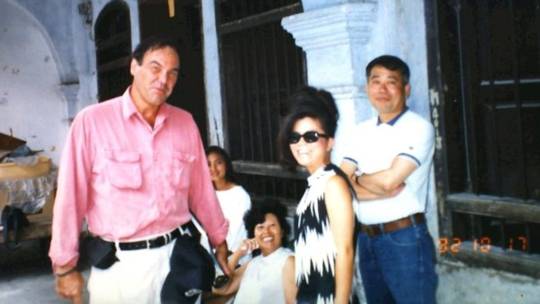
30 years ago, we were in Thailand making Oliver Stone's most poetic film. And I recently reunited with my movie family for a rescreening of "Heaven & Earth," part of his Vietnam War trilogy.
Thuan Le Elston | USA TODAY
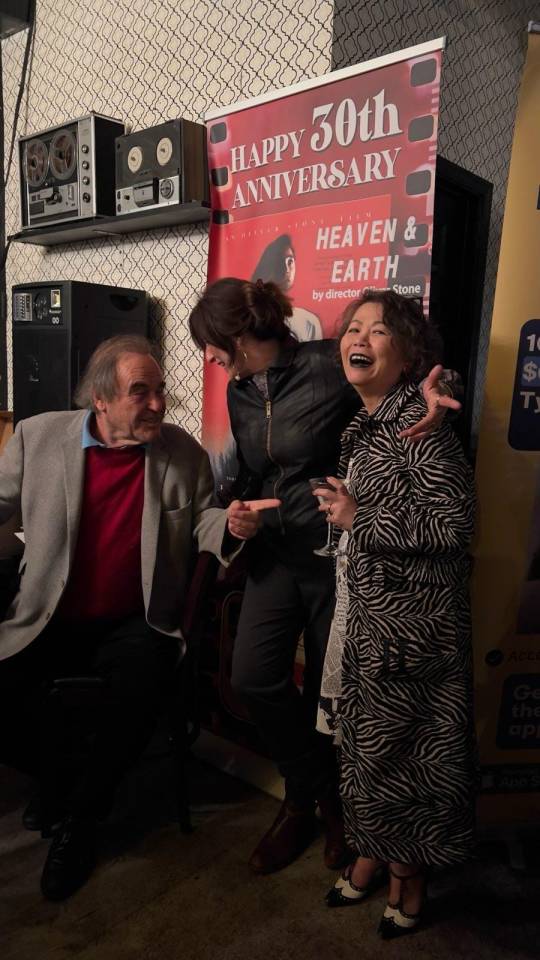
Oliver Stone's holding an open casting call for his third Vietnam War movie, this time from the perspective of the Vietnamese people.
I was a young reporter at the Los Angeles Times' Orange County bureau in the early 1990s, and part of my job was to monitor the Vietnamese-language press in Little Saigon, a major cultural and commercial community of refugees spread out over several cities. And one day, Oliver's announcement was on the front page of Nguoi Viet daily newspaper.
The article said the Academy Award-winning director and screenwriter of "Platoon," "Wall Street" and "Born on the Fourth of July" had already held open auditions in Asia and Europe and in other American cities, but the final casting call would be in Little Saigon. I knew I'd cover it for The Times, but the biggest question on my mind was: Did Oliver Stone already have a screenplay for this first ever Hollywood movie from the Vietnamese perspective? Because I wanted to help him write it.
Spoiler alert: I didn't help Oliver write "Heaven & Earth." But along with many other Vietnamese non-actors, I was cast for the movie. I had 15 minutes' worth of speaking scenes throughout the film, sharing lines with Debbie Reynolds and Tommy Lee Jones – and Joan Chen and Haing Ngor, who played my parents. I was Kim, a sister to the main character in this major motion picture that not only educated me about my past but also gained me a movie family for my future.
30th anniversary of 'Heaven & Earth'
It was three decades ago that we were all in Thailand making Oliver's most poetic film, one with the heart of a Buddhist feminist. (Communist Vietnam was still closed back then and objected to many things in the script.) And Sunday, we reunited in Los Angeles for a rescreening of "Heaven & Earth," which premiered on Christmas Day in 1993.
Oliver based his movie on "When Heaven and Earth Changed Places" and "Child of War, Woman of Peace" – the memoirs of Le Ly Hayslip. Le Ly was a child of Central Vietnam who, because her village was caught between communist North Vietnam and the Washington-backed South Vietnam, became a teenage Viet Cong guerilla, a reformed entrepreneur and then an immigrant to America.
Her journey is not for the faint of heart: She suffered rape by fellow VC guerillas, torture in a South Vietnamese military prison and then the suicide of her U.S. military veteran husband in Southern California.
Now a grandmother living in San Diego, Le Ly remains one of the strongest and most determined women I know. With no formal education, she has published two memoirs that were made into a Hollywood movie and founded the nonprofit Global Village Foundation. In fact, right before our movie reunion in L.A., she was back in Central Vietnam bringing aid and supplies to flood victims.
So no, Oliver didn't need me to help write anything; he had Le Ly. But in Little Saigon in December 1991, I covered the open casting call and brought along my best friend, a budding model and actor.
Mass therapy session on Vietnam War
The event drew thousands to a huge hall, where they started lining up outside at 7 a.m. Inside, mini film crews had set up cameras to screen test the Vietnamese Americans. No script was handed out. Instead, the war refugees were asked to improvise from their own experiences: You're a mother who has to send your son to war. You're a father trying to protect your daughter. Your family is divided over Ho Chi Minh.
It turned out to be a massive therapy session for 12 hours. It's as if these Vietnamese Americans, so used to trying to bury the past to have a future, were all at once given permission to relive their nightmares, pains and secrets. Everyone just wanted to tell their stories. And cry. Everyone cried. The crews doing the screen tests sobbed behind cameras and had to take breaks between auditions.
So many people were waiting in line, the casting directors asked my childhood friend Tran Tran and I to help audition our fellow refugees. I played a daughter, a mother, a sister to anyone who needed me. I didn't have any nightmares to relive: I was only 8 when my family escaped the fall of Saigon in 1975; the pains and secrets belonged to my parents. But those survivors auditioning for the movie were so real, their memories so alive, it was easy to help improvise their scenes.
At the end of that emotionally exhausting day, Tran got her screen test for the main role, Le Ly. I played the bitter older sister who threw her out of my house.
One thing we learned later was that Warner Bros. didn't want to make a film with subtitles, which three decades ago was still a big no for American audiences. The actors Oliver chose had to be able to be understood in English. Tran and I, both born in Vietnam but grew up in Phoenix, were confident of our American sides.
Surprise: The casting directors called me back but not my friend, who, yes, remains my friend (and in fact came with me to the movie reunion last weekend, as you'll see in clicking through the photo gallery below).
Oscar winner for screenwriting
At one of my audition callbacks, I was finally given Oliver's screenplay – and was blown away by what a lyrical writer he is and understood why he won an Oscar for writing "Midnight Express."
Reading "Heaven & Earth" made me cry. At a time when Asians in general, let alone Vietnamese Americans, almost never saw our true selves represented on the Hollywood screen, Oliver was amplifying the story of a small village girl who should have remained invisible to history. But Le Ly refused to stay invisible, and Oliver recognized that kindred spirit.
In the summer of 1992, the call finally came: My last audition was my first meeting with Oliver at his office, where he had me read lines with him for Kim, one of Le Ly's older sisters who grew from rice farmer to bar girl to San Diego housewife.
Whatever I did worked. Oliver smiled and told me I got the part: "You're my Kim."
We hugged, shook hands, maybe – I was so excited I really don't remember what happened after hearing those words.
By early October, I was on a jet to Thailand, where I worked on the movie until Christmas break.
Reliving terror of war, bonding as movie family
As I later wrote for The Times in an essay headlined "Scenes From Another Lifetime":
On leave from The Times, I spent 2 1/2 months in Thailand, where not only did I and the other non-actors in the movie learn acting on the job, but I also saw close up the realities of a conflict I never knew personally. In character, we stood knee deep in the mud of rice paddies and cowered while American helicopters barking bullets interrupted our work; ran to a neighbor’s house to witness his killing by the Viet Cong; and argued with each other about how to deal with the violence. ...
All of this played havoc on my psyche. Day and night, I moved between the past and the present, war and peace, old enemies and new friends. No longer could I separate myself from the people and events I had known only intellectually.
As strangers who met only because we're supposed to portray a family on screen, you can't go through long, harrowing days on set without bonding. And we filmed in rural southwestern Thailand – Phang Nga, a 90-minute drive outside the touristy Phuket Island. Every night, the cast shared trauma and entertained each other over family meals. On the rare days we had off together, we played tourists.
A vivid memory for me is an afternoon by the hotel pool: Our movie father Haing Ngor, who had won a best supporting actor Oscar for "The Killing Fields" in 1985, also had written a memoir about his escape from the communist Khmer Rouge, who forced the gynecologist and obstetrician underground, where he worked as a doctor at the risk of his own life. As he and other cast members chatted and relaxed, I read "Haing Ngor: A Cambodian Odyssey" and asked, "How are you still alive?"
We learned from one another yet also got bored together. Our movie mother Joan Chen, star of "The Last Emperor" and "Twin Peaks" and now a director herself, admitted once to being scared of ghosts. As easygoing as Joan was, I'm not sure she ever forgave my prank of making spirit noises outside her door with my movie brother Dustin Nguyen, who had starred in "21 Jump Street" and who now acts in and directs episodes of "Warrior."
Reunion of 'Heaven & Earth' family
Last weekend was about the fifth time the "Heaven & Earth" family reunited after three decades. Tragically, our reunions have drawn fewer of us over time because of distance and death:
Haing survived Cambodia's Khmer Rouge only to die in a senseless shooting outside his Los Angeles home in 1996.
Costume designer Ha Nguyen, nominated for an Oscar for "The Mask," died of cancer in 2012.
Hiep Le, our leading actress who starred as Le Ly, passed away in 2017 from complications of stomach cancer.
Watching "Heaven & Earth" again on the big screen Sunday in Los Angeles with both my Hollywood family and my real family, I remembered how generous my movie idols were in their interactions with us non-actors: Tommy Lee Jones, playing my movie sister's husband, made sure I was comfortable in our one-on-one scene. Debbie Reynolds shared her insecurities over her Hollywood career.
But watching scenes with my movie father Haing Ngor and my movie baby sister Hiep Le, I had to close my eyes. It hurt too much. I missed them so much. No amount of wishing could bring them back.
What comforted me and stuck with me still is how our movie family feels like a real family after all these years. We've suffered together. We've survived together. We've partied together.
And just like in the beginning, Le Ly and Oliver have been there at each reunion. They're both our heaven and earth.
-Thuan Le Elston, "'You're my Kim': How I landed a Hollywood movie and a scene with Tommy Lee Jones," USA Today, Nov 18 2022 [x]
0 notes
Link
Check out this listing I just added to my Poshmark closet: Vintage Ingleman Designs Applejack Apple Ceramic Coffee Tea Mugs Cups Set of 4.
0 notes
Link
Check out this listing I just added to my Poshmark closet: dining table set of 4 Mikasa Spring Legacy Y4003 soup bowls..
0 notes
Link
Check out this listing I just added to my Poshmark closet: Vintage 90s Fat cat in the Garden Coffee Tea Mugs Sunflower print Stoneware.
0 notes